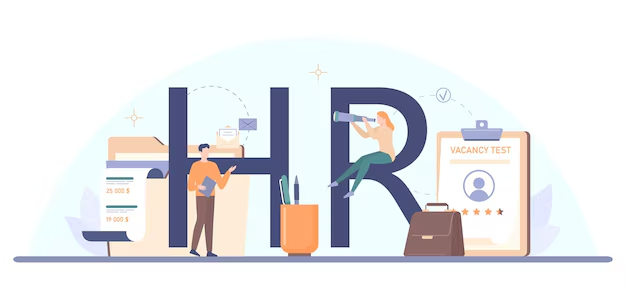What is a Grievance ProcedureWhat is a Grievance Procedure? A grievan... More?
A grievance procedureWhat is a Grievance Procedure? A grievan... More is a formal process established by organizations to address and resolve employee complaints or disputes in a systematic, fair, and transparent manner. These complaints, often referred to as grievances, may relate to workplace issues such as unfair treatment, harassment, discrimination, disagreements with management, or dissatisfaction with working conditions.
The grievance procedureWhat is a Grievance Procedure? A grievan... More provides employees with a structured way to voice concerns and seek resolutions while ensuring that employers have a clear framework to manage and resolve conflicts effectively. This process not only helps maintain workplace harmony but also protects the rights of both employees and employers.
Key Elements of a Grievance Procedure
- Clear Communication Channels
A grievance procedureWhat is a Grievance Procedure? A grievan... More establishes clear pathways for employees to report issues, typically involving direct communication with their immediate supervisor, HR department, or a designated grievance officer. - Step-by-Step Process
Most grievance procedures follow a sequential process, starting with informal discussions and escalating to formal steps if the issue remains unresolved. This progression allows for flexibility and encourages quick resolution. - Documentation
Accurate record-keeping is a critical component of the grievance procedureWhat is a Grievance Procedure? A grievan... More. This includes documenting the nature of the complaint, actions taken, and the outcomes of any discussions or investigations. - Confidentiality
To protect the privacy of the individuals involved, grievance procedures often include strict confidentiality measures. This helps foster trust and encourages employees to raise concerns without fear of retaliation. - Timely Resolution
The grievance process is designed to resolve issues promptly. Timelines are typically set for each stage of the process to ensure that grievances are addressed without unnecessary delays. - Fair and Impartial Handling
The procedure ensures that all grievances are handled impartially, with decisions based on facts rather than bias or favoritism.
Steps in a Grievance Procedure
- Informal Discussion
The process often begins with an informal conversation between the employee and their immediate supervisor. Many grievances can be resolved at this stage through open communication. - Formal Written Complaint
If the issue is not resolved informally, the employee submits a formal written grievance. This document should outline the nature of the complaint, relevant details, and desired outcomes. - Investigation
The employer, typically through the HR department or a designated grievance officer, conducts a thorough investigation. This may involve interviews with the complainant, witnesses, and the accused party, as well as a review of relevant documents or evidence. - Hearing or Meeting
In some cases, a formal hearing or meeting is held to discuss the grievance. Both parties are given an opportunity to present their perspectives, and a neutral party may mediate the discussion. - Resolution and Outcome
Based on the investigation and hearing, the employer determines an appropriate resolution. This decision is communicated to the employee in writing, along with any steps taken to address the grievance. - Appeal Process
If the employee is dissatisfied with the resolution, they may have the option to appeal the decision. Appeals are typically reviewed by a higher-level manager or an external mediator.
Importance of a Grievance Procedure
- Fosters Open Communication
A grievance procedureWhat is a Grievance Procedure? A grievan... More encourages employees to raise concerns openly, creating an environment of trust and transparency. - Promotes Fair Treatment
By providing a structured and impartial process, grievance procedures ensure that all employees are treated fairly and equitably. - Prevents Escalation
Addressing complaints early can prevent minor issues from escalating into larger conflicts that could disrupt workplace harmony. - Reduces Legal Risks
A well-defined grievance procedureWhat is a Grievance Procedure? A grievan... More helps organizations comply with labor laws and minimizes the risk of legal disputes. Employees are less likely to seek external remedies if they feel their concerns are handled internally. - Improves Employee Satisfaction
Knowing that their concerns are taken seriously boosts employee morale and engagement, contributing to a more positive workplace culture. - Enhances Organizational Reputation
A fair and effective grievance process reflects well on the organization, demonstrating its commitment to employee welfare and ethical practices.
Challenges in Implementing Grievance Procedures
- Employee Reluctance
Employees may hesitate to raise grievances due to fear of retaliation or concerns about being labeled as a troublemaker. - Bias or Favoritism
If the grievance process is perceived as biased, employees may lose trust in its fairness. - Delays in Resolution
Lengthy or inefficient grievance procedures can frustrate employees and exacerbate the issue. - Inadequate Training
Managers and HR personnel must be adequately trained to handle grievances professionally and sensitively.
Best Practices for Effective Grievance Procedures
- Develop a Clear Policy
Organizations should create a detailed grievance policy that outlines the process, roles, and expectations. - Train Managers and HR Staff
Providing training ensures that those handling grievances understand the procedure and know how to manage complaints professionally. - Encourage Early Resolution
Promote informal discussions as the first step in addressing issues, as this often leads to quicker and less contentious resolutions. - Ensure Confidentiality
Protecting the privacy of those involved is crucial to maintaining trust in the grievance process. - Monitor and Review
Regularly review the grievance procedureWhat is a Grievance Procedure? A grievan... More to ensure it remains effective and compliant with labor laws.
Conclusion
The grievance procedureWhat is a Grievance Procedure? A grievan... More is a vital tool for maintaining a fair and harmonious workplace. By providing a structured process to address employee concerns, it ensures that issues are resolved in a timely, impartial, and transparent manner. An effective grievance procedureWhat is a Grievance Procedure? A grievan... More not only protects employee rights but also enhances organizational culture and reduces the risk of disputes escalating into larger problems. For businesses, implementing and adhering to a well-defined grievance procedureWhat is a Grievance Procedure? A grievan... More is a key step toward building trust and fostering a positive work environment.
